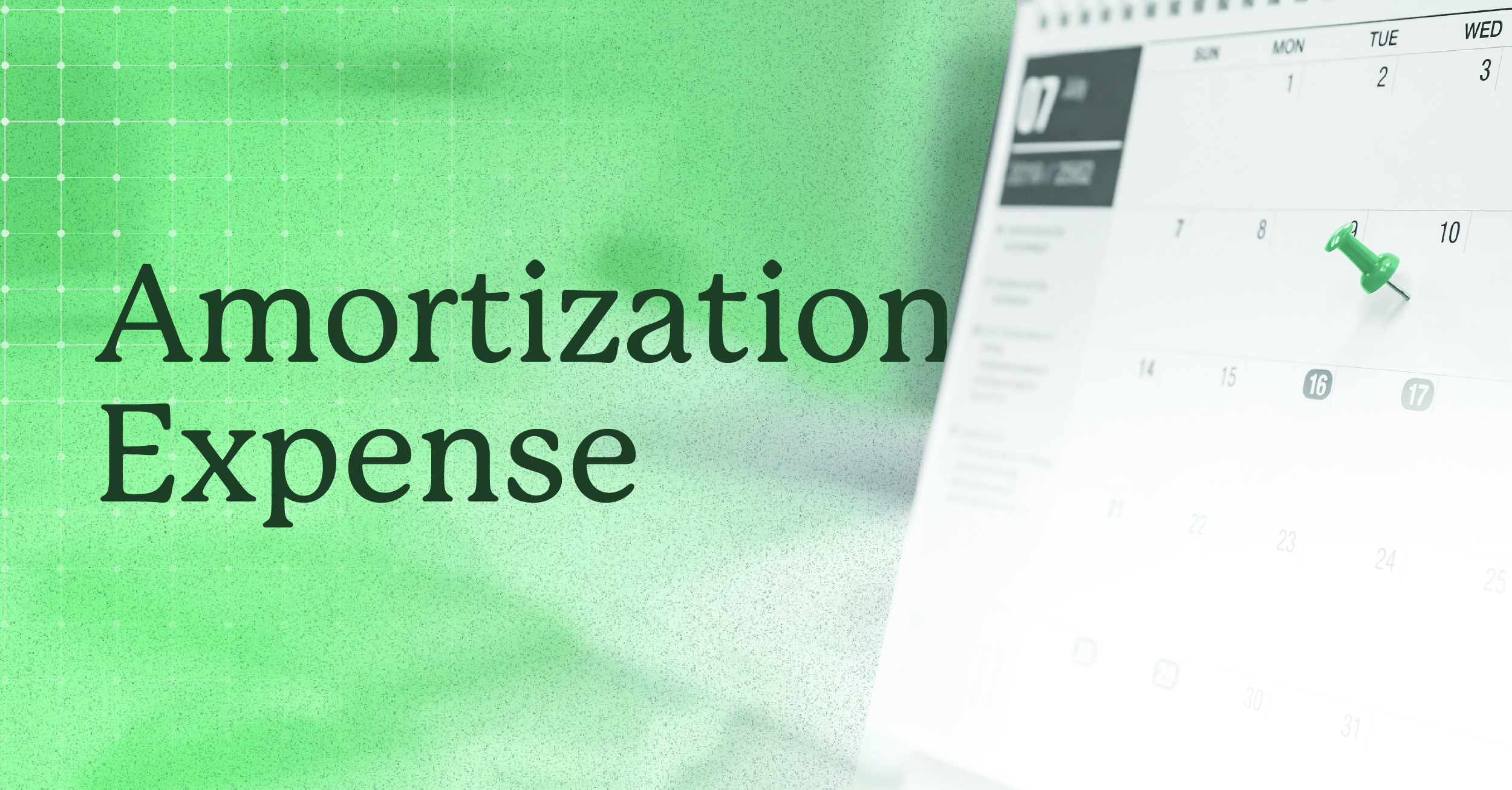Oct 28, 2025 8:30:00 PM |

A typical audit engagement involves scrutinizing many complex financial calculations, with the review of a company's amortization expense being a crucial part of the process.
Amortization expense is the method a company uses to spread out the cost of an intangible asset over its estimated useful life. Think of it as the accounting equivalent of depreciation for assets you can't physically touch, such as a patent.
The accounting department first calculates this annual amortization amount and then officially records it as an adjusting journal entry. This entry simultaneously increases the Amortization Expense on the income statement and reduces the book value of the intangible asset on the balance sheet, maintaining the double-entry system.
What is Amortization Expense?
Amortization expense is the systematic allocation of the cost of an intangible asset over its estimated useful life. It specifically applies to assets you cannot physically touch, such as patents, copyrights, trademarks, acquired software, and certain types of goodwill. This accounting mechanism ensures that the expense is recognized over the period the asset generates revenue, following the matching principle. Note that this is different from loan amortization, which refers to the scheduled repayment of a debt over time.
How Amortization Expense Works in Accounting
Most companies use the straight-line method to calculate amortization, which is the simplest and most common allocation approach. This method evenly distributes the total cost of the asset across its estimated useful life.
For example, if a company purchases a patent for $100,000 with an estimated useful life of 10 years, the annual amortization expense will be $10,000 per year ($100,000/10 years).
Amortization is a non-cash expense, meaning no actual cash changes hands when the entry is recorded. It is captured using an adjusting journal entry at the end of an accounting period:
- Debit: Amortization Expense (This increases an expense account, reducing net income.)
- Credit: Accumulated Amortization (This is a contra-asset account, reducing the book value of the intangible asset on the balance sheet.)
This expense is then reported on the Income Statement, typically included within Operating Expenses or Selling, General, and Administrative (SG&A) Expenses. Meanwhile, the running total of the Accumulated Amortization is reported on the Balance Sheet, directly offsetting the original cost of the intangible asset to show its current Net Book Value.
Amortization vs. Depreciation
While they share a number of the same core purposes, amortization and depreciation apply to fundamentally different types of assets.
Both amortization and depreciation are methods of allocating the cost of an asset over its useful life, serving three primary functions:
- Matching Principle: Both ensure that the expense of using an asset is matched with the revenue that the asset helped generate in the same period.
- Non-Cash Expense: Both are non-cash expenses, meaning they appear on the income statement and reduce net income, but no actual cash leaves the company at the time the expense is recorded.
- Balance Sheet Reduction: Both use a contra-asset account (Accumulated Amortization or Accumulated Depreciation) to systematically reduce the asset's book value on the balance sheet.
Some of the key differences hinge entirely on the nature of the asset being expensed:
- Amortization applies exclusively to Intangible Assets. These are non-physical assets, such as patents, copyrights, customer lists, and software.
- Depreciation applies exclusively to Tangible Assets. These are physical assets, such as property, plant, and equipment (PP&E), including buildings, machinery, and vehicles.
Comparison Table
|
Feature |
Amortization Expense |
Depreciation Expense |
|
Asset Type |
Intangible Assets (Non-physical) |
Tangible Assets (Physical) |
|
Common Examples |
Patents, Copyrights, Trademarks, Software |
Buildings, Machinery, Vehicles, Furniture |
|
Purpose |
Spreads cost of intangible assets over useful life |
Spreads cost of tangible assets over useful life |
|
Financial Impact |
Reduces Net Income (I/S); Reduces Intangible Assets (B/S) |
Reduces Net Income (I/S); Reduces PP&E (B/S) |
Common Examples of Amortization Expense
- Software Licenses: This is the legal right granted to a company to use a specific piece of software, with the cost amortized over the expected usage period.
- Customer Lists: This represents the acquired value of an existing customer base, which is amortized over the estimated duration of those customer relationships.
- Patents: These are exclusive government-granted rights to an invention, with the acquisition cost amortized over the shorter of the patent's legal life or its useful economic life.
- Trademarks: This is a recognizable sign or design that distinguishes a company's products (like a brand name), and while generally not amortized due to having an indefinite life, its cost is amortized if a limited life is determined.
- Goodwill from Acquisitions: This is the premium paid for a company above its net asset value, which is not amortized but instead tested annually for impairment (a decline in value).
Tax and Compliance Implications
Amortization is a critical deduction that reduces a company's taxable income. Both the IRS (for tax reporting) and GAAP/IFRS (for financial statements) require amortization, but they often use different rules and useful lives for the same asset. For example, the IRS may mandate a 15-year life for most purchased intangibles, while GAAP allows a shorter, economically determined life. This divergence creates temporary differences in reported income, forcing companies to maintain separate amortization schedules and record deferred tax liabilities or assets to ensure full compliance.
Why Amortization Expense Matters to Companies
Amortization expense is essential because it directly impacts how a company reports its profitability and maintains transparency for stakeholders. The expense is necessary because it ensures the total cost of a valuable intangible asset is recognized over the many years the asset generates revenue, rather than hitting the financial statements all at once. This avoids having the company's profits be artificially distorted by a large, upfront asset purchase, thus providing a smoother, more accurate measure of true operational profitability over time. Ultimately, reporting amortization gives investors, creditors, and other stakeholders a realistic, consistent view of how quickly valuable intangible assets (like patents or software) are being consumed, which is vital for making sound financial decisions.
Frequently Asked Questions (FAQs)
Is amortization expense a cash or non-cash expense?
- It is a non-cash expense. It reduces net income on the income statement, but no actual cash leaves the company at the time the expense is recorded.
What types of assets can be amortized?
- Only intangible assets with a finite useful life are amortized (e.g., patents, copyrights, software licenses). Assets with indefinite lives (like goodwill and most trademarks) are not amortized.
How do you calculate amortization expense?
- It's most commonly calculated using the straight-line method: the cost of the intangible asset is divided evenly by its estimated useful life in years.
Where does amortization expense appear on the income statement?
- It is typically listed as part of Operating Expenses or grouped within Selling, General, and Administrative (SG&A) Expenses.
What’s the difference between amortization expense and accumulated amortization?
- Amortization Expense is the annual amount recorded on the Income Statement that reduces profits. Accumulated Amortization is the running, cumulative total of all expenses recorded to date, which reduces the asset's book value on the Balance Sheet.
What’s the difference between amortization and depreciation expense?
- Amortization allocates the cost of intangible assets (like patents), while depreciation allocates the cost of tangible assets (like machinery). Both are non-cash expenses that reduce asset value.
Conclusion
Amortization expense is a foundational accounting concept, defined as the systematic allocation of intangible asset costs—like patents and software—over their useful lives, which is vital for providing a transparent, accurate view of a company's profitability. Given the complexity of tracking multiple amortization schedules and supporting documentation, accounting and audit firms must modernize their approach: simplify client audit preparation and streamline workflow processes by leveraging cutting-edge tools like Suralink.
Interested in learning more about Suralink? Schedule a personalized walkthrough of the Suralink platform today!
Subscribe
Get out latest news and tactics that can help you and your business!
By clicking submit you agree to these terms and conditions.

